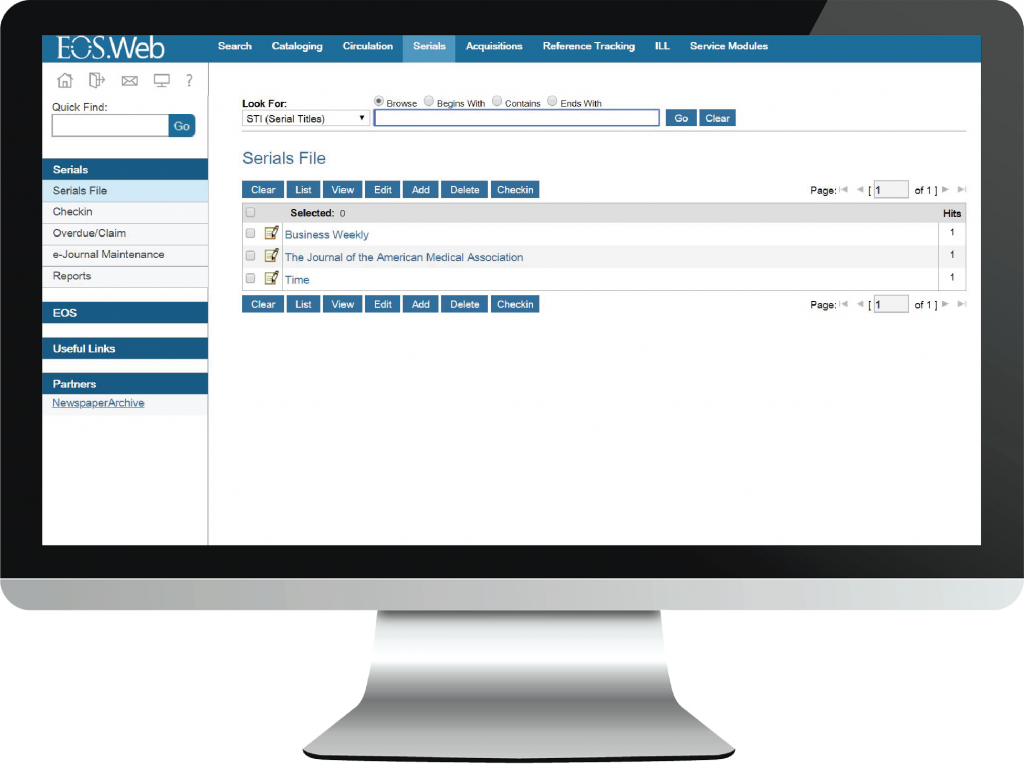
The EOS.Web Serials module enables you to control receipt of journals, series, and supplements, no matter what their publishing schedule is or location. Built-in issue receipt prediction functionality accommodates a wide variety of regular and irregular publishing schedules, which makes management of both predictable and unpredictable, unstructured journals quick and easy.
Serials management is made quick and easy, giving libraries and information centers the ability to not only catalog a serials title, but also to predict, receive, and claim individual serial issues in addition to the ability to claim missing issues and create custom routing slips. This is due to support for the MARC serials holdings standard used to track issues.
Serial checkin is made quick and accurate. If the issue to be received is not the predicted issue, the system predicts and displays the chronology and enumeration of future issues. Automated serials easily handle special or duplicate issues, supports check-in of irregular patterns, supports multiple copies, tracks issue location, prints TOC labels and routing slips, tracks damaged issues, and provides editable holding summary statements.
EOS.Web has the MARC editor at the Serial Copy level to edit MARC Holdings records in raw MARC.
Journal, TOC route slips, and TOC labels are supported in addition to the ability to create multiple routing slips for each copy of a serial. Customizable routing list information includes the serial title, name, and location of the recipient. An unlimited number of modifiable patrons can be included on a list.
Full integration of the EOS.Web OPAC catalogs makes check-in information immediately available to the online catalog, making it easy to see if there are missing issues. Location information and public notes display with the holdings statement. Additionally, you can build links from the serials bibliographic record to electronic magazines, electronic journals, online periodicals, and more, making it easy for your patrons to immediately see if an article in a specific journal is in the library.
Serials bindery functionality includes the ability to automatically move the serial set into the bindery cycle, provides bindery instructions, and enables shipment tracking of the set until the bound set is received by the library.
Claiming issues is automated by providing the ability to establish parameters for determining dates when claims should be made, including the ability to define the interval between the predicted arrival date and the claim date. At any time authorized staff can override claims parameters (in order to prevent a claim, or delay the date, or to generate a claim independently of the parameters).